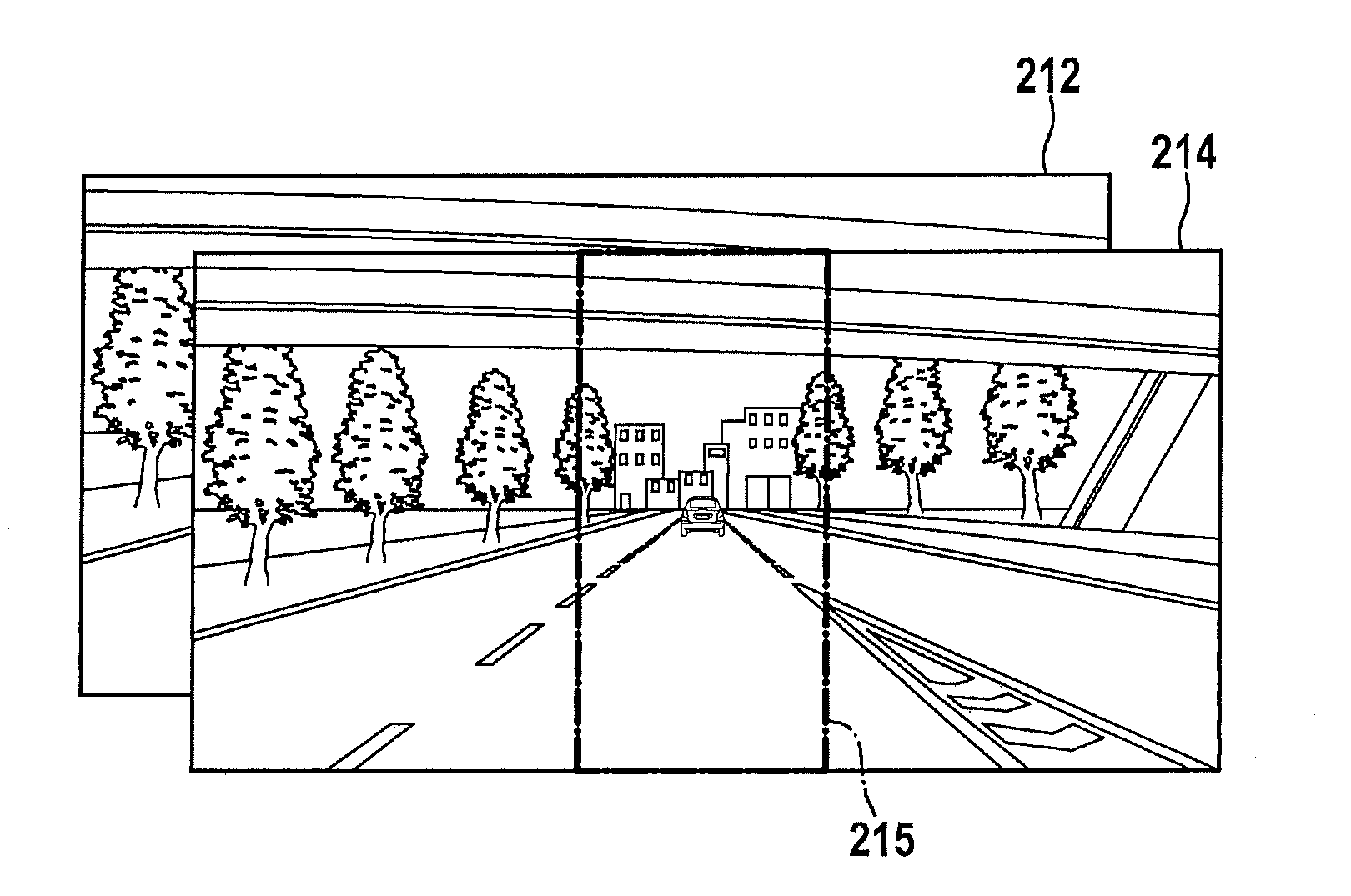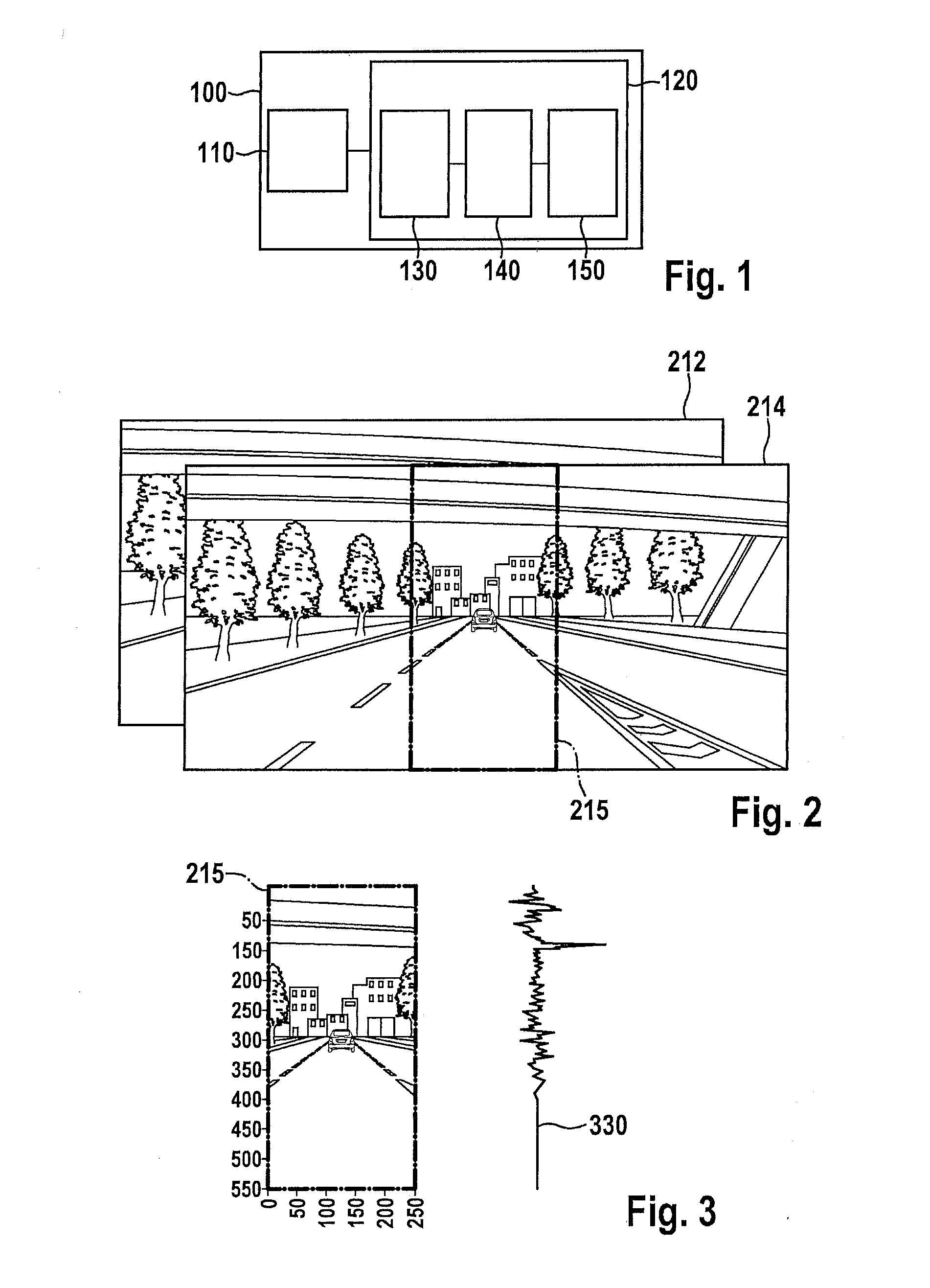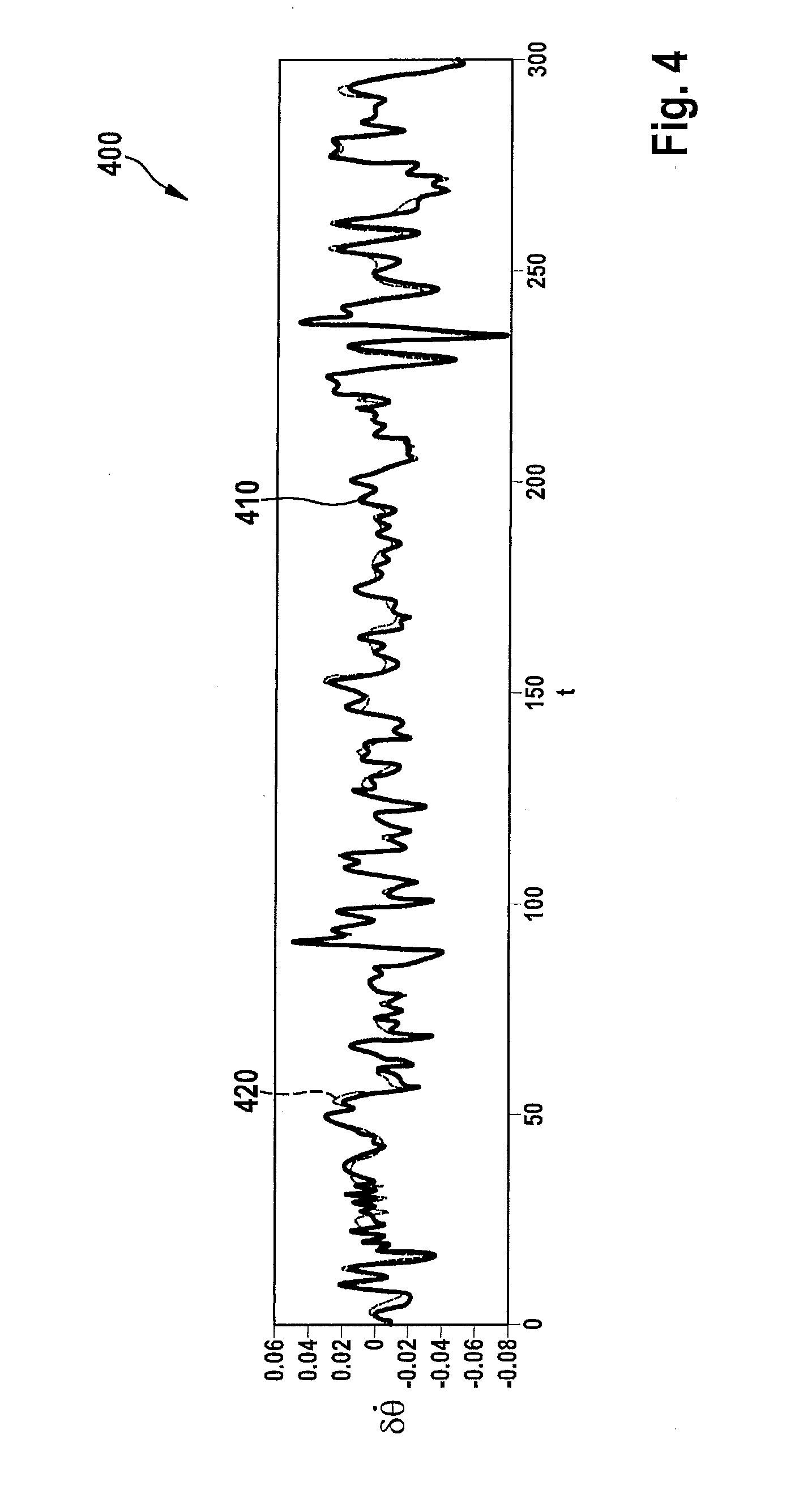Method for determining a pitch of a camera installed in a vehicle and method for controling a light emission of at least one headlight of a vehicle.
a technology for determining the pitch of a camera and a vehicle, which is applied in the direction of instruments, television systems, image enhancement, etc., can solve the problem of large error in distance estimation, and achieve the effect of reducing the required data processing capacity, reducing the cost of resource expenditure, and efficiently generating
- Summary
- Abstract
- Description
- Claims
- Application Information
AI Technical Summary
Benefits of technology
Problems solved by technology
Method used
Image
Examples
Embodiment Construction
[0031]Identical or similar elements may be provided in the figures with identical or similar reference numerals, a repeated description being omitted. It is clear to those skilled in the art that these features may also be considered individually or may be combined into further combinations which are not explicitly described here. Furthermore, the present invention is possibly explained in the following description with the use of different amounts and dimensions, the present invention being understood to not be restricted to these amounts and dimensions. Furthermore, method steps according to the present invention may be executed repeatedly and in a sequence other than that described. If an exemplary embodiment includes an “and / or” link between a first feature / step and a second feature / step, this may be read to mean that the exemplary embodiment has according to one specific embodiment both the first feature / the first step and also the second feature / the second step and has accordi...
PUM
 Login to View More
Login to View More Abstract
Description
Claims
Application Information
 Login to View More
Login to View More - R&D
- Intellectual Property
- Life Sciences
- Materials
- Tech Scout
- Unparalleled Data Quality
- Higher Quality Content
- 60% Fewer Hallucinations
Browse by: Latest US Patents, China's latest patents, Technical Efficacy Thesaurus, Application Domain, Technology Topic, Popular Technical Reports.
© 2025 PatSnap. All rights reserved.Legal|Privacy policy|Modern Slavery Act Transparency Statement|Sitemap|About US| Contact US: help@patsnap.com



